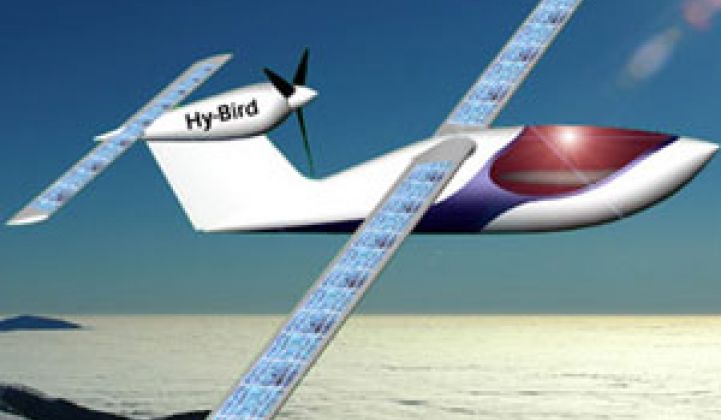Trina Solar said Monday it has secured a deal with LISA Airplanes to build a solar- and hydrogen-powered airplane.
The Chinese company plans to sell to France-based LISA (Light Innovative Sport Aircraft) nearly 300 solar cells that would be installed on the 20-meter (65.62 feet) wings and the horizontal tail of the airplane called Hy-Bird. Solar energy would help the plane takeoff and power on-board instruments during flight.
LISA set out to build luxury aircrafts when it was launched in 2002. LISA has developed a prototype Hy-Bird, and plans to assemble a commercial version by the end of 2009. The company aims to be the first to fly around the world using only renewable energy.
The luxury aircraft market is certainly a small one for Trina, but the deal makes the company part of an ambitious and eye-catching project.
Hy-Bird is no passenger plane, so the technical challenges of making it fly using renewable energy are much different than commercial airlines’ efforts to use less petroleum-based fuels.
Many commercial airlines have announced plans to test biofuels as alternative fuels. For example, Air New Zealand plans to run a test flight using fuels made with jatropha, a weed whose seeds are rich in oil (see Weed to Power New Zealand Jet).
Virgin Atlantic became the first airline to fly with biofuel when its Boeing 747-400 flew from London to Amsterdam in February this year. One of its four tanks contained fuel with 20 percent biofuel made of coconut and babbasu oil.
Continental Airlines also plans to test biofuels next year. In fact, the strong interest from the airline industry has spawned startups in this large market (see Continental Biofuel Demo Prepares for Takeoff).
Hy-Bird will have a fuel cell for cruise flights, providing an additional source of power while the airplane is in the air. An electric electric engine would fly the plane, according to the company’s Website. The plane would be made of carbon fiber and weigh 1.1 tons, reported the blog, Inhabitat.
After assembling the Hy-Bird, LISA engineers would still have to carry out a series of tests before the plane can make its maiden voyage. The flight would cover 1,500 kilometers (932 miles) in different stages, going from west to east.



